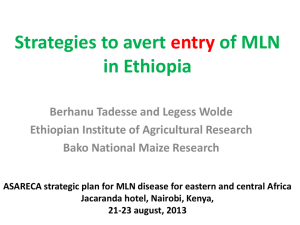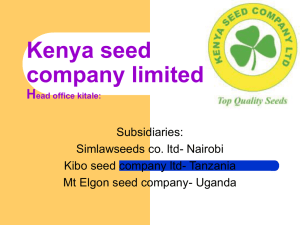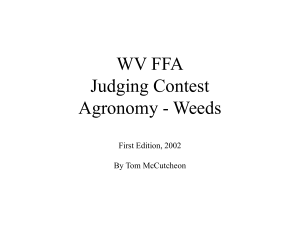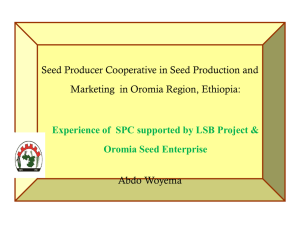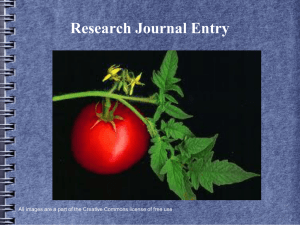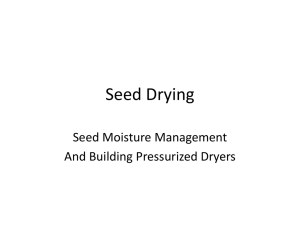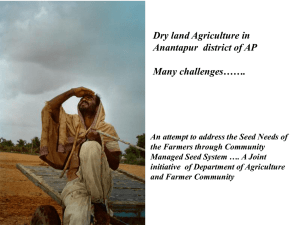Malkangiri, Orissa
advertisement
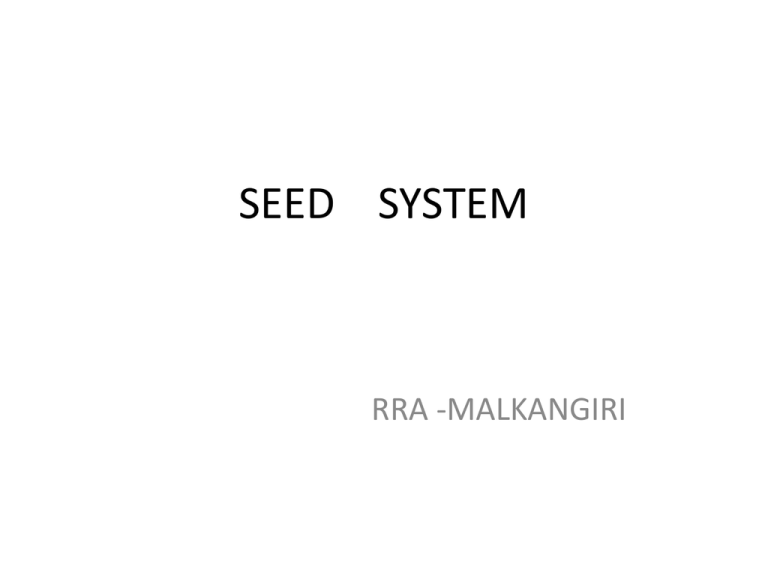
SEED SYSTEM RRA -MALKANGIRI Issues: • Traditional form of agriculture is being practice, which lead to decline and reduction of yield. • Excessive use/need of water. • Excessive use of chemical fertiliser and pesticides reduce soil fertility. • Changing climate hampering production. • Stagnant production of paddy. • Food insecurity of small and marginal tribal farmers. Challenges: • Lack of scientific knowledge base of the farmers • Non-availability of implements • Loosing local varieties on large scale • Lack of knowledge on post harvest technology Purpose • Community managed seed system that should provide quality seeds, desired variety, diversity of seeds, before sowing time. • The same system is intended to serve alternative contingency seeds in case of crop failure due to weather aberrations. • Community managed seed system should be evolved based on local agro-ecological systems, market needs, community food needs, local institutional and market linkages. Objectives • To establish community seed system that is managed by members of farmers with collaboration of local CBOs, NGOs, Government departments and financial institutions. • To evolve sustainable seed system that can provide quality seeds, diversified seeds to all dry-land farmers of the community, before sowing season at affordable prices. • To build capacities of CBO to manage own seed system. Objectives................. • To facilitate seed system to link up with all collaborating institutions and organisations • To ensure quality seed supply by establishing community seed bank. • Provide training to manage quality crop harvest, grading and processing. • To conserve and promote traditional varieties of all crops. • To promote participatory breeding and protect farmer rights on their varieties. • To promote local nurseries to supply annual and perennial plantations. Basic information about the GP • The Sikapally Gram Panchayath consists of three revenue villages and eleven villages/ hamlets. The Sikapally is located in Korukonda block, 20 Km away from Malkanigiri. The GP’s villages and hamlets located on either side of Konta –Malkanigiri high way. All villages of GP are situated within radius of five kilo meters. • The land is undulating with thick populations of Mahua and palm trees. The soil type is sandy loam. Major forest based livelihoods of tribal people are collection of Mahua flowers and beedi leaves, during nonagricultural season. However, villagers’ main occupation is agriculture, cultivating traditionally with all available natural resource. Land use pattern 15%, IrriKharif 1.10%, Irri Rabi 0%, Rain fed-Rabi 83%,Rain fed Kharif Farming system 4000 3500 3000 2500 2000 1500 1000 Up land 500 Medium land 0 Kharif -Rainfed Kharif -Irrigated Low land Rabi-Rainfed Rabi-Irrigated Major crops & acreage 6000 5000 4909 4000 3000 acres 2000 1050 1000 696 148 0 Paddy Sesame Pulses Groundnut Strategy and approach • Convergence of Govt. schemes by linking seed system activities to agriculture and other line departments for financial and technical assistance. • Fund flow through Gram Panchayat and funds utilization by CBO. • District level RRA secretariat reports the progress of seed system of district administration or collectorate of Malkangiri. • District secretariat of RRA monitor, review and report all activities of seed system. • Supporting NGO at GP level facilitate seed system by providing capacity building to CBOs and SHGs on seed system management and by giving technical trainings to seed producers. Institutional approach • RRA seed program will be implemented though local bodies, community based organisation and Self Help Groups. • For the development of suitable seed system for rain fed farming in the identified GP, it is more appropriate to approach through community Based Organisations, as these are managed by farmer members who are seed consumers and seed producers. • Village level SHGs are present which will be federated at revenue village level. • All farmer federations become member of Cooperative society. • Each farmer federation associate with seed bank at revenue village level. Expected Results • Proper documentation of seed system available in the district. • Seed banks established in collaboration with the line Dept. and management & control by community. • At least 25 – 30 % of the seed requirement meet from the Seed Bank . • At least 10 varieties of local produced seed –like paddy, millets and pulses are exchange through seed fair. • The district will have its own seed system and manage and control by people institution in end of the project period. • N0n formal seeds produced get recognition by Agriculture Department – Research Institute KVK. • Farmers in locality will not have any kind of distress on seed need. Six month Plan for Kharif 2012 season -process steps and time frame Time frame Intervention Process steps/activities Supply of certified seed of improved varieties Select farmers based on through Seed bank/sale irrigation and inputs June 1 st week June 4th week Collect seed indent from farmers and submit to Agric. Dept. June 1 st week Supply of seed Field monitoring and data collection June 1st -3rd week June-Sept Prodcution of improved vareities Selection of farmer and field July-November Source and supply of foundation seed Training to farmers June1st -2nd week Field monitoring and FFS June 1st -2nd week Quality crop management and quality harvest June 3rd week Processing and Storage July-November November-December Demonstartion of new varieties Selection of farmer and field June-October Supply of seed and inputs Field monitoring and FFS June 1st week June1st -2nd week June-October Integration of seed bank with grain bank organising SHGs in all villages June Formation of seed bank committee from CBO June meetings June Trainins June Documentation June THANK YOU


